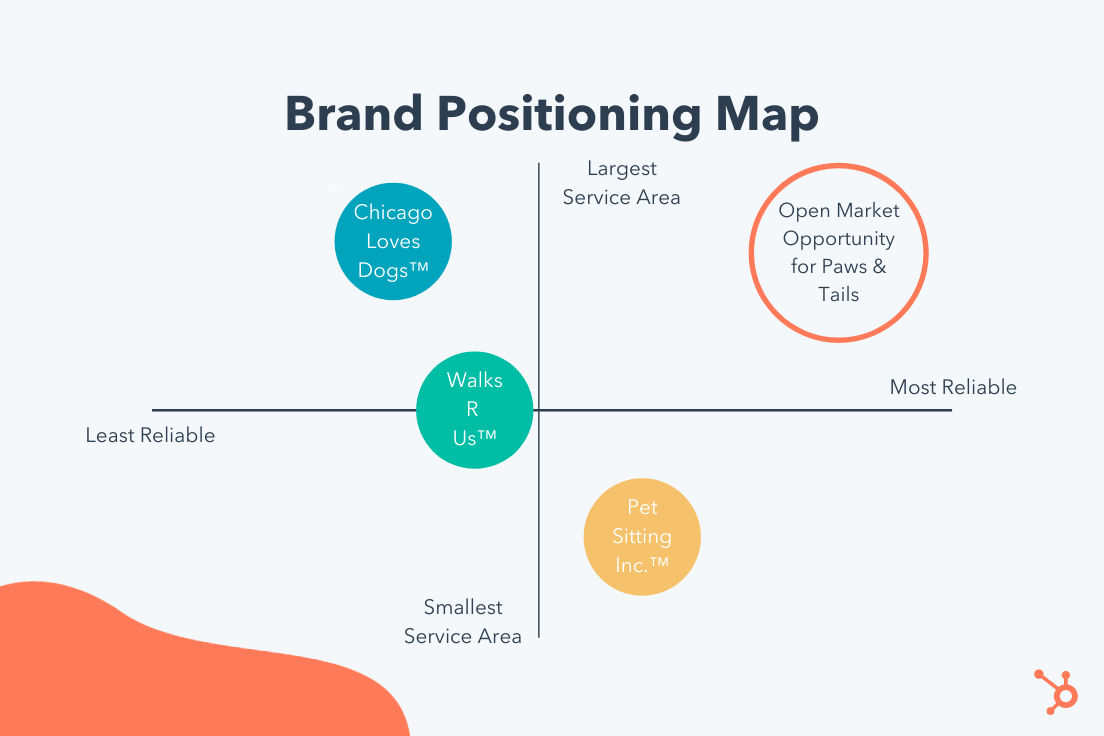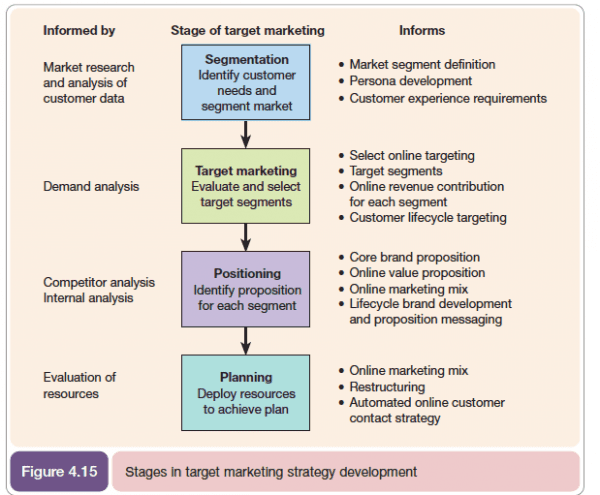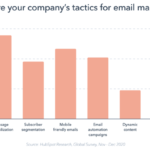The Marketer’s Guide to Segmentation, Targeting, & Positioning

I once heard a new business owner define their target market as … wait for it … “everyone”.
*cringe*
While it’s nice to believe that everyone would be interested in purchasing your product or service, it’s not wise to define your target market as such.
Not only does this definition (or lack thereof) create way more work for you; it also does a disservice to your actual target market — by over-widening your scope, you fail to inform and educate your audience about how your product or service can improve their lives.
This is where segmentation, targeting, and positioning come into play. We developed this guide to help you understand how and why you should invest time into better understanding your audience and targeting your marketing. Let’s dive in.
At its core, STP helps you to better target your marketing messages and better serve your customer base.
The model can also reveal niche markets, uncover new customer or market opportunities, and, ultimately, make your marketing efforts more efficient and cost-effective.
STP allows you to take a large, anonymous audience and define how your different products (or different components of the same product) relate to specific consumer segments within that larger audience — thus understanding how to position your product(s) and messaging to grab the attention of each segment.
Let’s unpack each part of the segmentation-targeting-positioning model.
1. Segmentation
Segmentation refers to the process of dividing your audience into smaller groups based on certain characteristics. This process allows you to group your individual audience members into similar groups so you can better communicate your products, features, and benefits that may be most relevant to them.
You can segment your audience based on one or more of these criteria:
- Demographics, which typically answer the question of who your buyer is (e.g. age, gender, education, location, and profession)
- Psychographics, which answer the question of why your buyer buys (e.g. priorities, personality traits, and beliefs and values)
- Lifestyle traits, such as hobbies, entertainment preferences, and non-work activities
- Behavior, such as brand loyalty, channel preferences, and other shopping habits
Segmentation may sound a little familiar to another process we often discuss here on the HubSpot blog — creating buyer personas. The two are very similar as they help you drill down the most important factors in your target audience.
But where buyer personas help you create a handful customer profiles that represent your broader audience, segmentation allows you to split your audience into countless segments, each of which you can uniquely target.
For example, let’s say Paws & Tails is a Chicago pet-sitting company that offers pet-sitting, dog walking, and boarding services. Given the vast number of pet owners in the city, they need to segment their audience into smaller groups to better understand how to position their services.
Based on their research and current customer base, they split their audience into three main segments:
- Segment A is made up of high-income pet owners who work often and need daytime dog walking and pet pop-in visits
- Segment B is made up of middle-class individuals and families who travel and need overnight boarding or pet-sitting services
- Segment C is made up of older pet owners and retirees who need help caring for their pets
2. Targeting
With your audience segments in hand, it’s time to move on to the targeting phase. First, however, you must decide which segments are worth targeting with your marketing. To decipher this, ask yourself some questions about each segment:
- Is this segment composed of enough potential customers to justify targeting? Would it yield enough profits if the segment were to convert?
- Is it measurably different from the other segments?
- Is it accessible by all members of Marketing and Sales?
- Is your company equipped and able to serve the segment? Are there any physical, legal, social, or technological barriers that could prevent that?
Choosing what segments to target is a strategic decision. Thankfully, certain strategic planning models like the PESTLE analysis can help you better understand the viability of each segment.
It takes a lot of work to successfully target a segment of your audience. Whether you’ve identified two segments or ten, don’t feel the need to target more than one segment at once. Plus — targeting one at a time will help you better position your marketing for each specific segment much better.
Following our example from before, Paws & Tails conducts research to better understand its Chicago audience. Paws & Tails finds that Segment A makes up 60% of its market size, Segment B makes up 30%, and Segment C makes up 10%. Moreover, Segment A has a higher average income and is willing to pay more for pet-sitting and walking services. Because of this, they choose to focus on Segment A.
3. Positioning
At this point, you should understand the demographics, psychographics, motivations, and pain points of the segment(s) you’ve chosen to target, which can provide a place to start when it comes to positioning your product or service.
First, take a step back and examine your product or service through the perspective of your chosen segment. If you were in their shoes, why would you choose your product over a competitor’s? What features or benefits are most relevant to you, based on the motivations and pain points you’ve identified?
This information is important to defining your brand positioning and understanding how it stacks up next to your competitors. One way to understand where you, well, stand is by building a positioning map, which is “the visual plotting of specific brands against axes, where each axis represents an attribute that is known to drive brand selection.”
The segment you choose to target should dictate what two attributes you plot on your positioning map. For example, let’s say Paws & Tails decides Segment A selects pet-sitting brands based on two attributes: service area and reliability. Here’s what a brand positioning map (with fictitious brands) may look like.
By understanding 1) what the target segment deems most important for brand selection and 2) where its competitors succeed (and fall short), Paws & Tails is able to identify an open market opportunity and position its marketing to best fit the needs and goals of its audience.
What is segmentation, targeting, and positioning in marketing?
The STP model is a priceless addition to any marketing strategy, regardless of your industry, product, or audience. It prioritizes efficient and effective marketing and ensures you’re delivering only the most relevant, targeted messaging across the board.
It also plays an important role in developing other strategies, such as your buyer personas, customer lifecycle stages, and core brand proposition.
By leading with a consumer-centric approach like STP, you can be sure that every inch of your marketing is relevant to your audience — thus, increasing the likelihood that they convert, purchase, and become lifelong customers.
Examples of Great Market Segmentation and Positioning
Brands are segmenting, targeting, and positioning their audiences and marketing constantly, oftentimes without us (consumers) even noticing. Ever seen a brand or product and thought “Huh, that’s perfect for me” or “Wow, right place at the right time”? Yeah … you’ve been subject to the STP model.
Let’s review a few examples of great marketing segmentation and positioning.
1. Panera Bread
With countless fast casual restaurants on the map, it’s hard to decide where to eat when you’re in the mood for a quick meal, But, for some reason, Panera Bread always comes to mind (at least for me).
Panera has successfully cornered the “health-conscious” and “climate-conscious” segment of the fast casual dining industry. Is Panera’s food so different from other fast casual options? Not entirely.
But by branding themselves with the perspective that “we believe that good food, food you can feel good about, can bring out the best in all of us”, Panera remains top-of-mind as a place to get high-quality food, fast.
2. AllBirds
Like dining opinions, there are so many shoe brands on the market. But AllBirds didn’t let that stop it from carving out a new niche in a busy space full of comfortable, active shoe options.
How did AllBirds position itself to set itself apart from the competition? By elevating it’s eco-consciousness and placing that front and center in its marketing. According to the AllBirds website, the brand “crafts with planet-friendly natural materials, like merino wool and eucalyptus trees, because they’re our best chance for a sustainable future.”
At first glance, AllBirds shoes don’t look too terribly different from other running or walking shoes. However, its audience segment that cares about sustainability and earth-conscious products knows the difference.
3. Billie
No longer can businesses simply segment their audiences by “men” and women” — the individuals within each broad gender group vary too much, and razor brand Billie took note of this.
In an effort to extinguish the “pink tax,” Billie markets cost-friendly razors and associated products. Moreover, they work to normalize body hair and other forgotten or shamed parts of women’s bodies.
Through this positioning, Billie is able to set their products apart from competitors and create a strong, positive community around their brand.
4. Hinge
The world of online dating is a busy, strange place. From Tinder to FarmersOnly.com, there seems to be a place for everyone to meet, well, anyone. Hinge came on the scene only a handful of years ago, yet it has skyrocketed to the top of the list of the most popular and reliable dating app.
Time and time again, I’ve heard that Hinge is a favorite because it works — meaning it helps people meet people and make real relationships. You wouldn’t think a dating app would position themselves to eventually be unnecessary, but that’s exactly what Hinge has done. In fact, it’s mission statement is “we built an app that’s designed to be deleted.”
By putting the needs and desires of its audience front and center, Hinge has created a more trustworthy, in-demand online dating experience and set itself apart from its competitors.
The segmentation-targeting-positioning model is designed to help you better target your marketing messages and better serve your customer base. It’s a win-win for you and your customers!
I once heard a new business owner define their target market as … wait for it … “everyone”.
*cringe*





kırmadan dökmeden su kaçak tespiti Göztepe’deki evimizdeki su kaçağını hızlıca buldular ve onardılar. Çok memnun kaldık. https://www.menagerie.media/ustaelektrikci